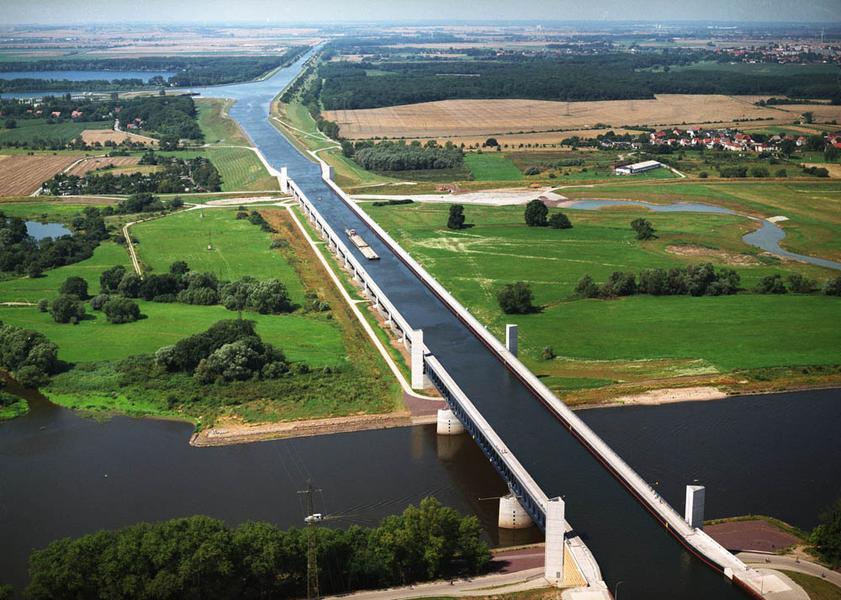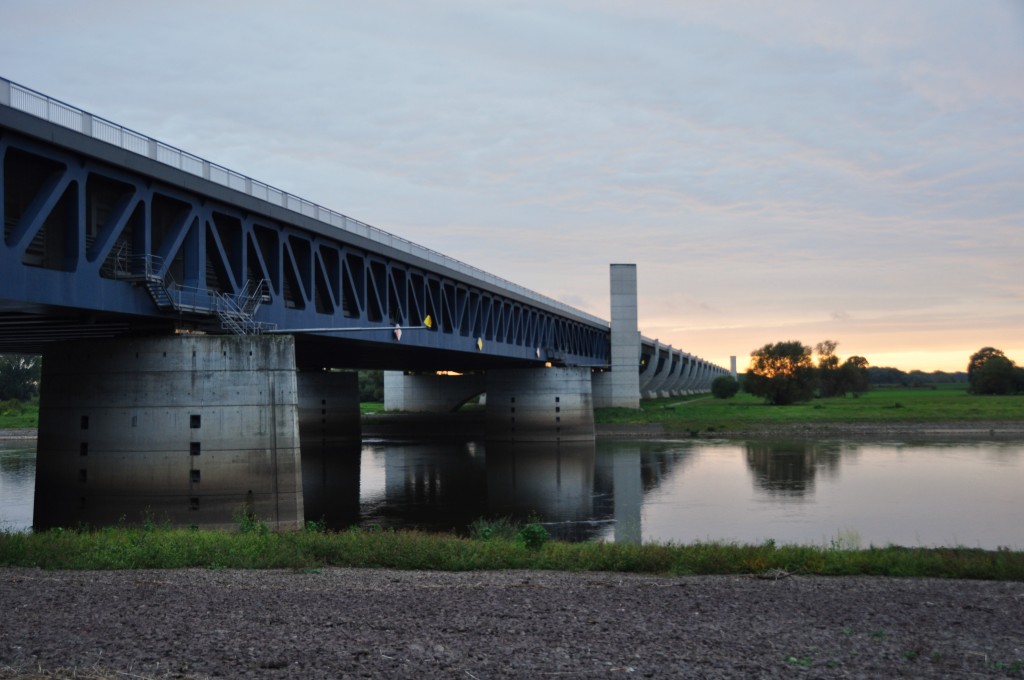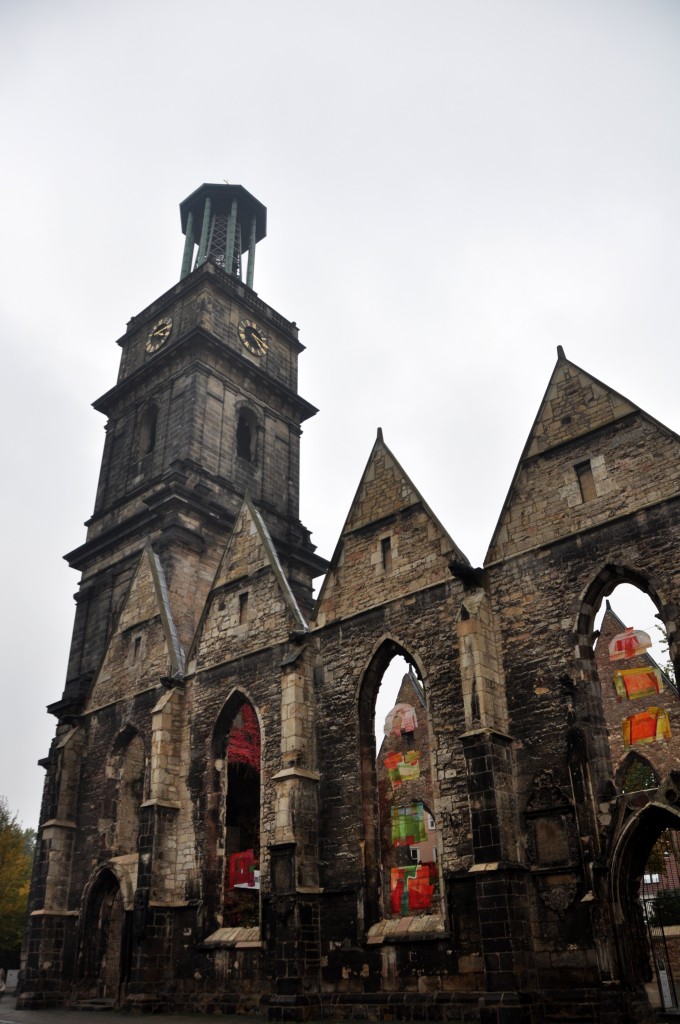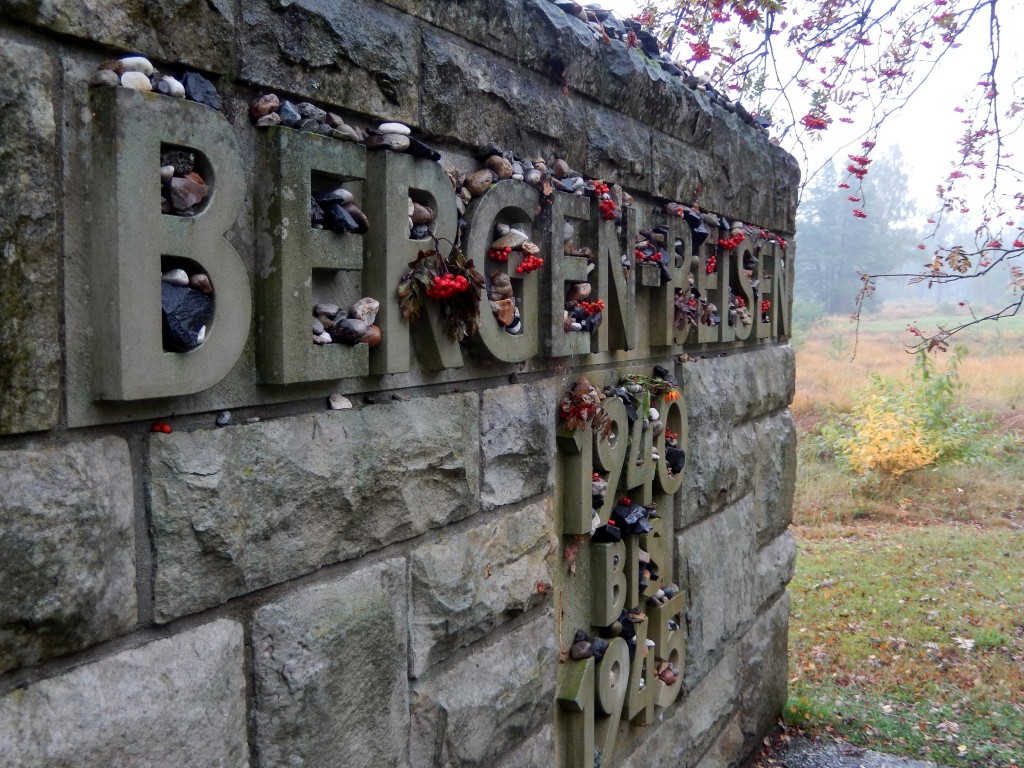On our way to Hannover, we stopped at the Wasserstraβenkreuz in Magdeburg, Europe’s largest canal bridge. The re-unification of Germany allowed this 1km bridge to connect Berlin with western Germany, after decades of planning was halted due to various types of political unrest, to say it lightly. Finished in 2003, it allows the Mittellandkanal to pass over the Elbe River.
Really, without a helicopter, it is hard to get of visual of one of “The World’s Most Amazing Bridges”, so here is an aerial shot I borrowed from Forbes.
We arrived there right at sunset, without a soul…or a boat…in sight.
Hannover is known for its amazing zoo, but un-ending autumn rains kept us in the Altstadt. Our favorite part of Hannover was Aegidienkirche, a church that was destroyed during Allied bombings but now stands as a memorial to WWII victims.
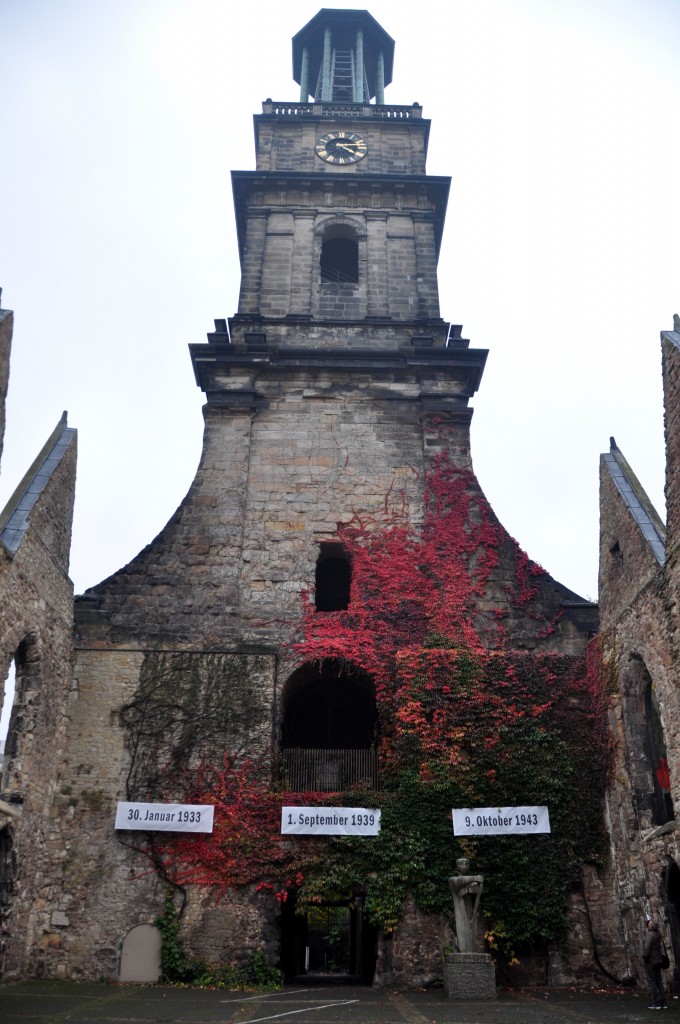
Jan 30, 1933- Hitler becomes Chancellor of Germany; Sept 1, 1939- WWII begins; Oct 9, 1943- Church destroyed by bombs
Outside of Hannover, in Lohheide, is Gedenkstätte Bergen-Belsen. From 1940-1945 Bergen-Belsen served as a POW camp, from 1943-1945 a Concentration camp, and from 1945-1950 a Displaced Persons camp.
I thought that between the other concentration camps we have visited and Terezín, that we had experienced the breadth of memorial sites. However, Bergen-Belsen is unlike any other camp memorials we have seen. There are actually no buildings remaining of the former concentration camp, yet it delivers a punch harder than I ever imagined.
The camp was liberated by the British in 1945 and during that time, extensive documentation was made of what the British found and the actions they took after liberation. This is all that remains of Bergen-Belsen: video footage of British soldiers and SS officers burying tens of thousands of victims in mass graves, and the graves themselves.
I knew there would be mass graves at the site before we arrived. However, I never expected there to be so many. Each one is labeled with the number of souls that were buried there: “Hier ruhen 5000 Tote April 1945” (Here rest 5000 dead) or “Hier ruht eine unbekannte Anzahl Toter 1945” (Here rest an unknown quantity of dead). The combination of the footage and the graves has been the most “real” experience I have had with WWII thus far.
Bergen-Belsen is also where Margot and Anne Frank are buried. No one knows, or will ever know, in which of the mass graves they rest, but a symbolic headstone stands as a place for visitors to pay their respects.
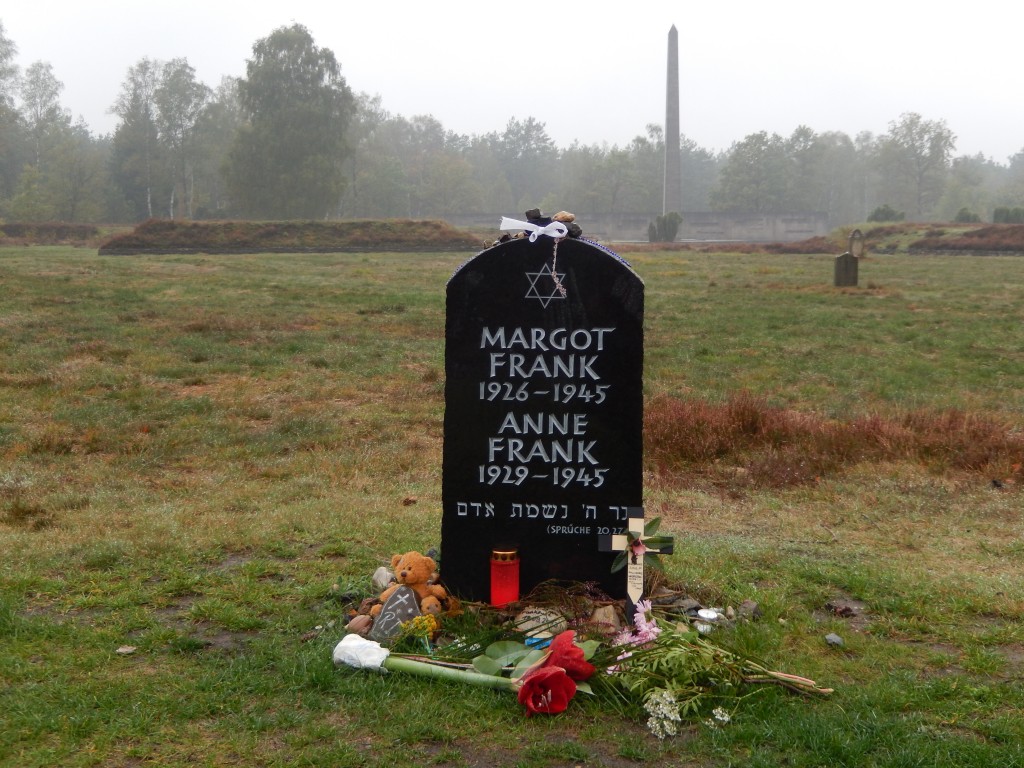
Headstone for the Frank sisters, memorial obelisk to the right, mass graves to the left and far right.
Gedenkstätte Bergen-Belsen is dotted with purple heather plants and the graves are covered in them. Purple heather represents admiration, beauty, and solitude – fitting words, I feel. I’m sure they are gorgeous when in bloom.

